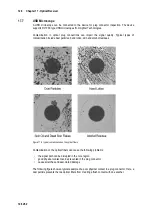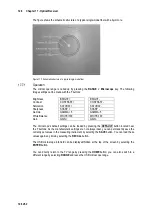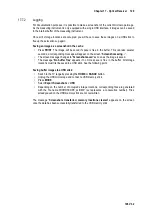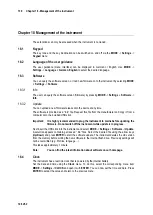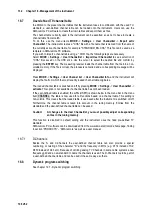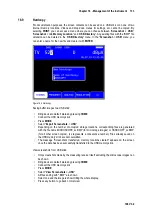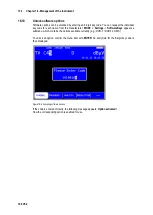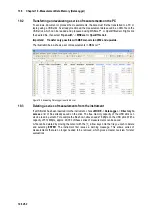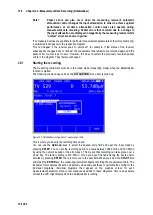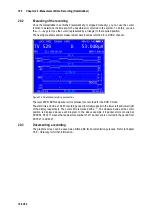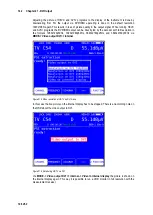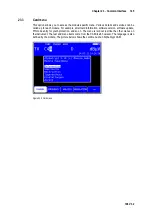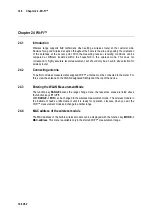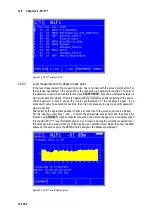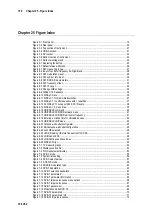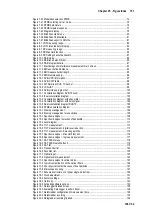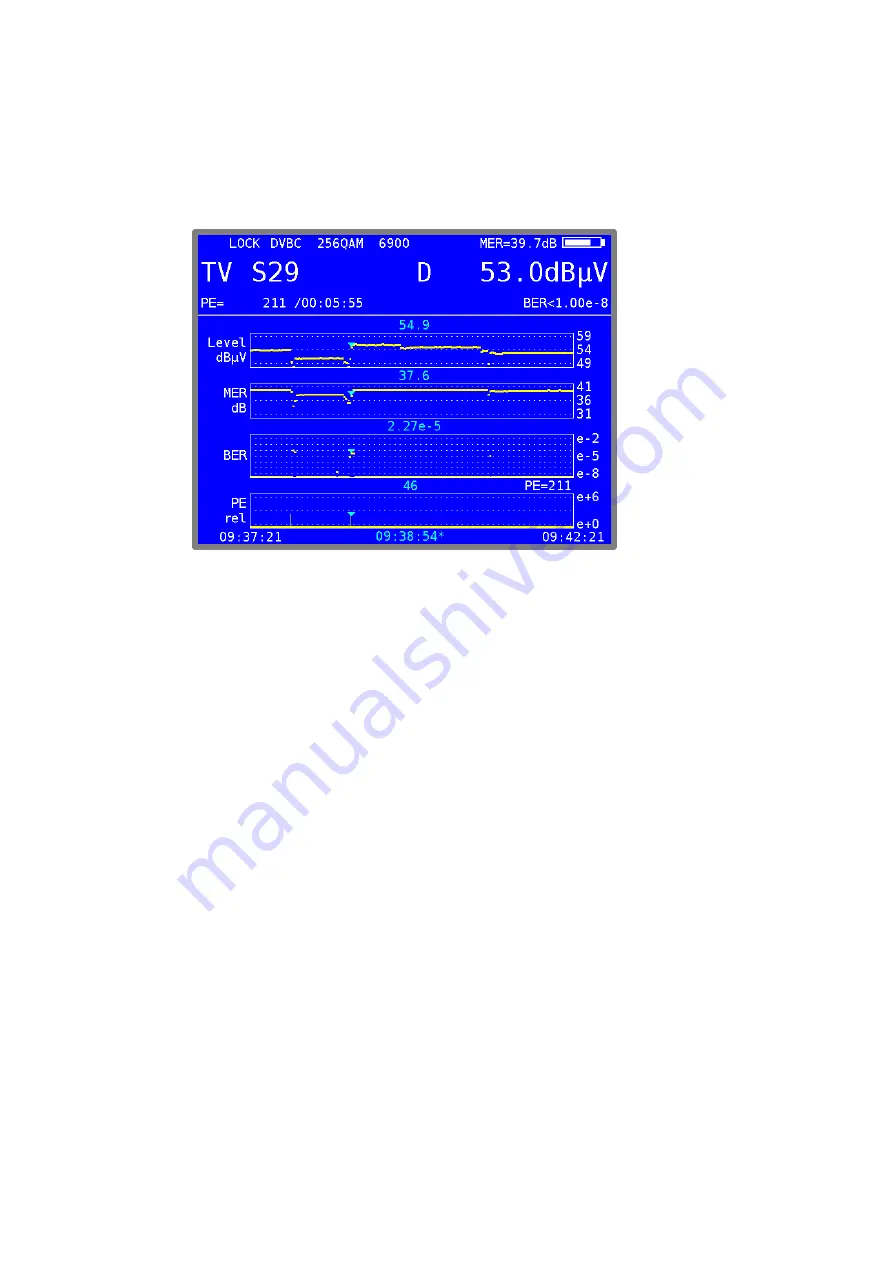
140 Chapter 20 - Measurement Data Recording (DataGrabber)
106 V3.2
20.2
Evaluating of the recording
Once the DataGrabber has finished (automatically or stopped manually), you can use the cursor
function to determine the time at which a possible error occurred in the system. To do this, you use
the
←/→
keys to move the cursor (represented by a triangle) to the required position.
The next figure shows sample measurement data that was recorded for a DVB-C channel.
Figure 20-4 DataGrabber recording packed errors
The level, MER, BER and packet errors (relative) are recorded for the DVB-C mode.
The start time and time at which recording ended (normally) appear in the lower left and lower right
of the display respectively. The cursor time is marked with a ‘*’. The measured value at the cursor
position is displayed above each diagram. In the above example, 46 packet errors occurred at
09:38:54. PE=211 means that an absolute number of 211 packet errors occurred in the period from
09:37:21 to 09:42:21.
20.3
Documenting a recording
The graphics screen can be saved as a bitmap file for documentation purposes. Refer to chapter
18.9 – Hardcopy for further information.

